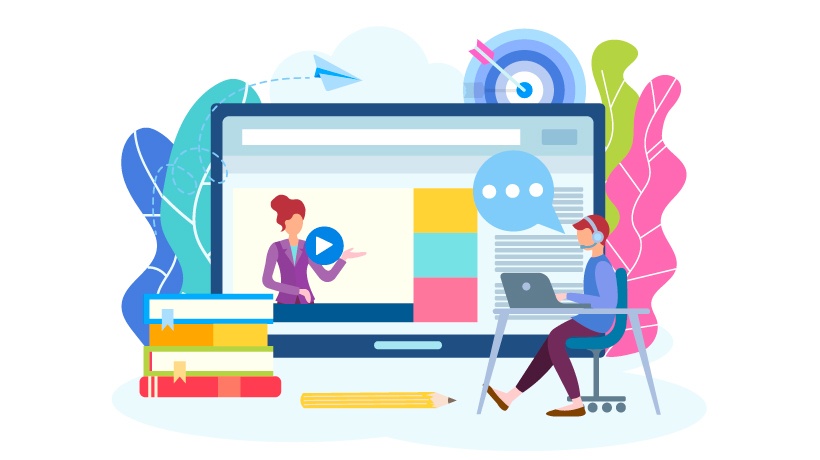How Should Educators Handle This Crisis?
In this moment of uncertainty, we definitely need some time to adjust. However, we shouldn’t allow steps backward; on the contrary, we should gather our wits to implement those educational strategies that always seemed appealing but had been left behind because nothing urged their way into our daily lesson routine. Well, here we are now and the educational community should not only live up to society’s expectations but also exceed them. Our battle has two fronts: the proper use of educational technology and the firm focus on inquiry-based learning.
Our first step is to convey to our students the Working-From-Home (WFH) message and help their caregivers get on board too. As soon as they can, companies and institutions need to make the transition from the actual working environment to WFH, at least for employees whose work can be done from a distance. In other words: in real life, we don’t stay still, we adjust and we keep going. This is a teachable moment in resilience.
How We’ve Been Using Educational Technology Has Shifted
Technology offers the means that makes distance learning a feasible project for schools. And there is no doubt that the majority of us have been using technological tools, designed for educational reasons and beyond, to enhance our lesson. Here’s the difference: whatever we have been using as something “extra” in our instruction, now becomes “basic” for us to keep our lessons in-line.
In most cases, school administrations have rapidly risen up to the challenge and created a feasible list of educational toolkits to make WFH efficient for both faculty and students. On top of such lists, we usually find platforms that allow students to watch their teachers’ lectures—synchronously or asynchronously. These initiatives greatly assist learning during a crisis.
This is definitely one way to make the transition from attending school to WFH smoother. Educators cover their material in the “traditional way,” and students feel they’re “back to normal.” However, you may have already realized that students’ interactions with us—and with their peers—are much more disconnected and more reluctant than usual, even if the lesson is “live.” What can we do to keep social learning alive?
As an educational consultant, my role is to support educators in aligning their instruction with the right EdTech tool. This challenge is no different, but it’s way more urgent. It calls on us to find the “best fit” to ensure that all curricular goals can yet be accomplished; to do this properly, students’ inquiry-based learning should remain a high priority for teachers.
Student Curiosity Doesn’t Stop When Teachers Go Offline
It’s hard in the classroom, and it becomes even harder when we all are behind our computers, to successfully tackle our students’ questions the moment they’re raised. Ultimately, we may feel that the lack of actual interaction may hold them back from asking questions, and our daily presentations will ultimately become a series of one-man-shows. But what can we do to keep their inquiry on track?
If students weren’t able to find the right moment to ask during the online lesson, or they watched our lecture asynchronously, or something came up while they were doing their homework, they should have the chance to submit their questions afterward. This way, we’ll have the opportunity to monitor their requests and respond efficiently during the day.
How Inquiry-based Technology Is Supporting Εducators
It goes without saying that we don’t need to exchange long documents with our students to answer their questions asynchronously—this would destroy the “efficient” part of this process. You can use a variety of platforms to collect and respond to student questions. One such example is the 100mentors app. Educators can create a topic, invite students to join and video-record their questions in 20 seconds. Then you, as an educator, can answer with a 100-second video, visible to all the members of the topic.
If you wish to extend your students’ learning and give them a piece of the real world back, you can also choose to have Subject Matter Experts from universities and companies respond to them. More than 4000 mentors around the globe can also see our students’ questions and offer an answer. In other words, this can be a great opportunity for students to expand their pursuit of knowledge, beyond school walls.
Rethinking Teaching and Learning During a Crisis Can Be a Bright Spot
At the end of the day, from an educational perspective, this crisis prompts us to rethink both the form and the content of our learning instruction. For one thing, let’s revisit the fundamental role that educational technology should play in our classrooms—not as an “accessory,” but as our personal assistant. Secondly, we should consider an educational environment in which students are the protagonists instead of us. Our lectures should not be considered the center of their educational experience, rather their inquiry should be what paves the road to knowledge.
We can offer our students a fine blend of educational technology and inquiry-based learning to help them stay in touch with their educational goals and inspire them to set the bar even higher.








